The Bengal is one of the few breeds selectively bred to emulate traits of wild felids.

The Bengal is one of the few breeds selectively bred to emulate traits of wild felids.
• High contrast, patterned coats coupled with a smooth, luxurious texture.
• Exotic facial appearance: Prominent eyes, large puffy nose leather, and rounded deeply
cupped ears.
• The body is athletic, with substantial boning , larger hindquarters and a thick tail.
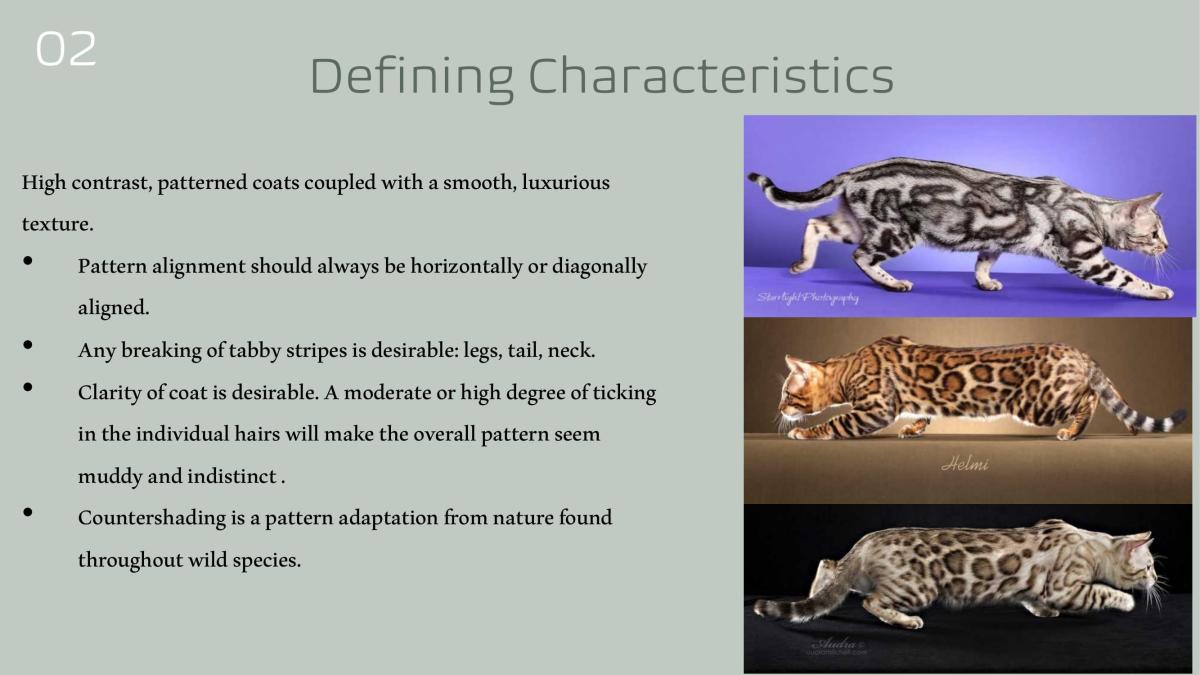
High contrast, patterned coats coupled with a smooth, luxurious texture.
• Pattern alignment should always be horizontally or diagonally aligned.
• Any breaking of tabby stripes is desirable: legs, tail, neck.
• Clarity of coat is desirable. A moderate or high degree of ticking in the individual hairs will make the overall pattern seem muddy and indistinct .
• Countershading is a pattern adaptation from nature found throughout wild species.
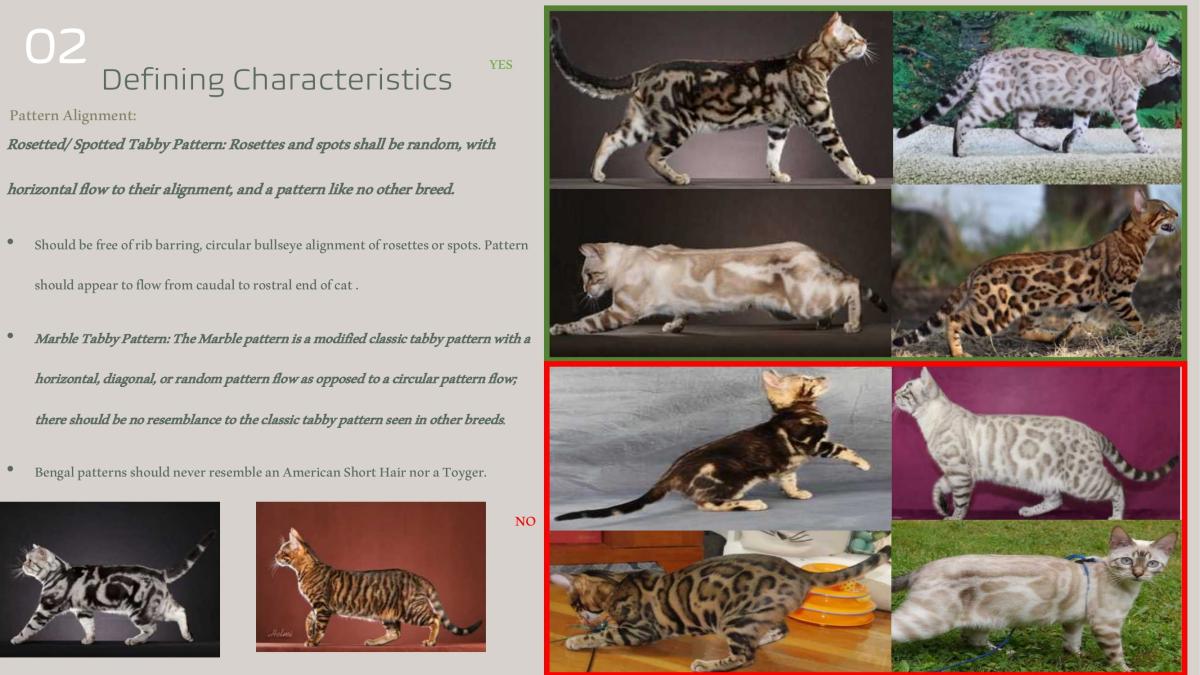
Pattern Alignment
Rosetted/ Spotted Tabby Pattern: Rosettes and spots shall be random, with horizontal flow to their alignment, and a pattern like no other breed.
• Should be free of rib barring, circular bullseye alignment of rosettes or spots. Pattern should appear to flow from caudal to rostral end of cat .
• Marble Tabby Pattern: The Marble pattern is a modified classic tabby pattern with a horizontal, diagonal, or random pattern flow as opposed to a circular pattern flow; there should be no resemblance to the classic tabby pattern seen in other breeds.
• Bengal patterns should never resemble an American Short Hair nor a Toyger.
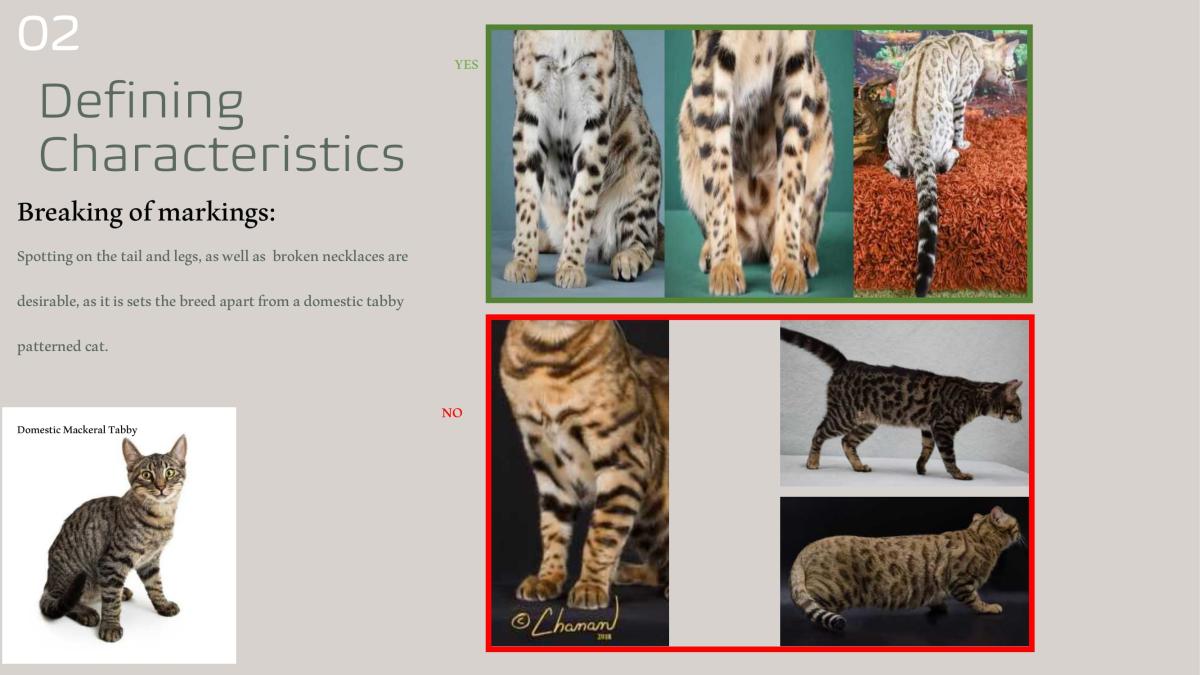
Breaking of markings:
Spotting on the tail and legs, as well as broken necklaces are desirable, as it is sets the breed apart from a domestic tabby patterned cat.
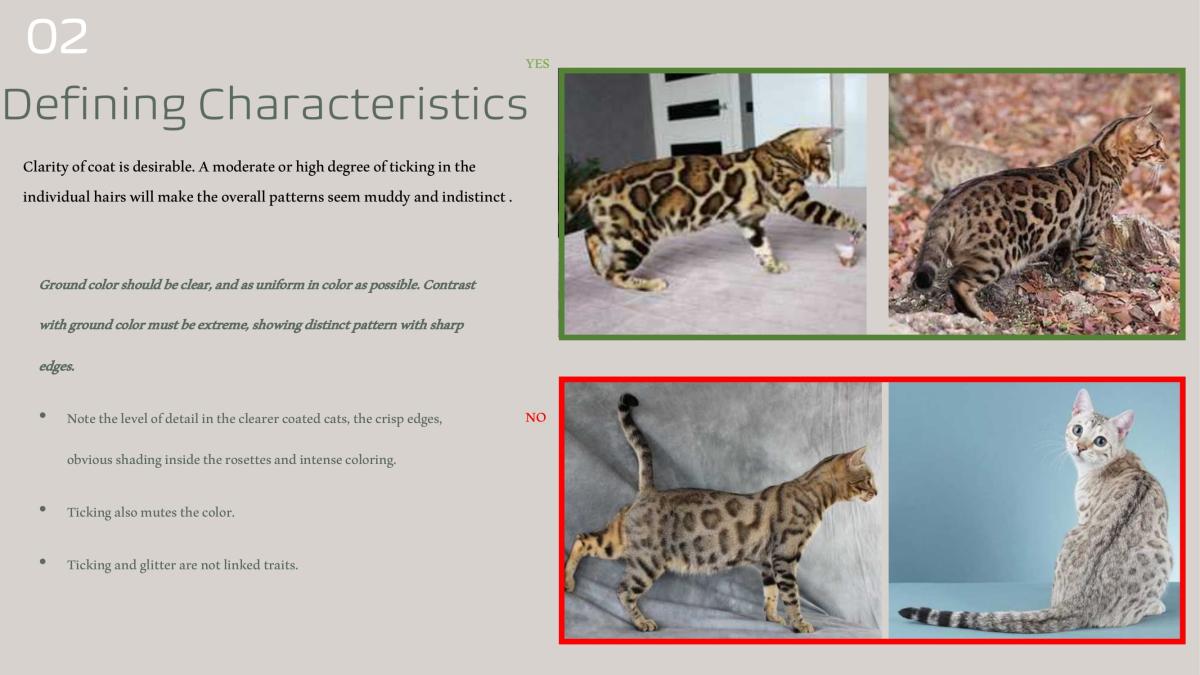
Clarity of coat is desirable. A moderate or high degree of ticking in the individual hairs will make the overall patterns seem muddy and indistinct .
Ground color should be clear, and as uniform in color as possible. Contrast with ground color must be extreme, showing distinct pattern with sharp edges.
• Note the level of detail in the clearer coated cats, the crisp edges, NO obvious shading inside the rosettes and intense coloring.
• Ticking also mutes the color.
• Ticking and glitter are not linked traits.
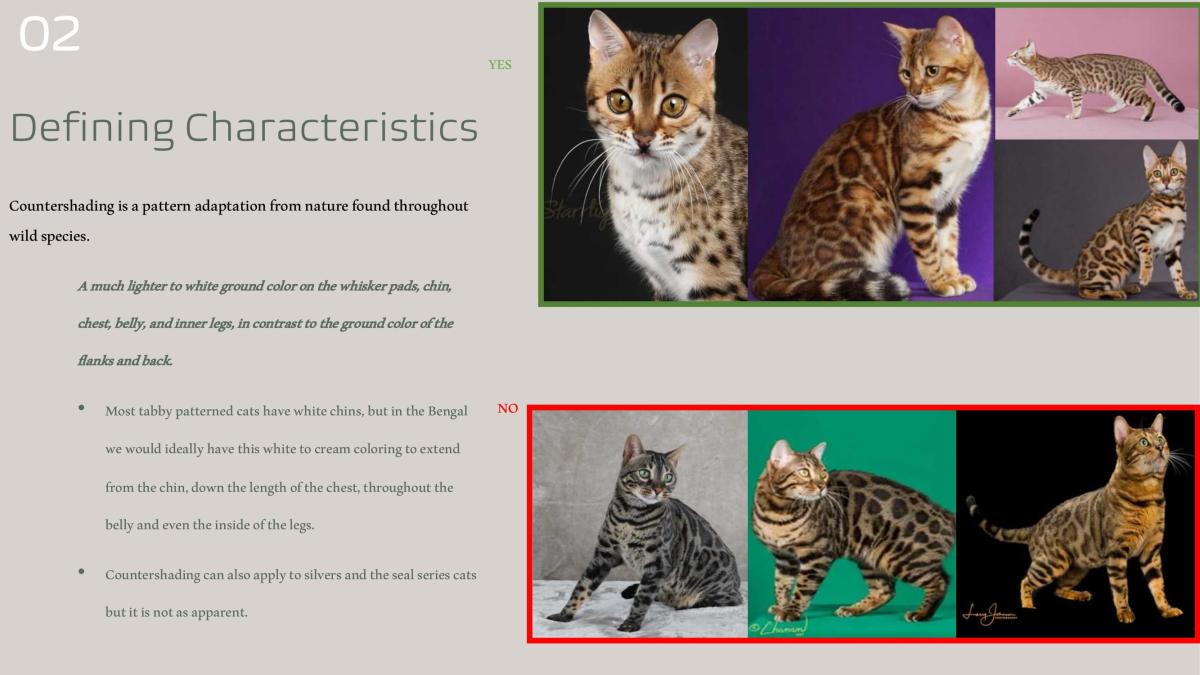
Countershading is a pattern adaptation from nature found throughout wild species.
A much lighter to white ground color on the whisker pads, chin, chest, belly, and inner legs, in contrast to the ground color of the flanks and back.
• Most tabby patterned cats have white chins, but in the Bengal we would ideally have this white to cream coloring to extend from the chin, down the length of the chest, throughout the belly and even the inside of the legs.
• Countershading can also apply to silvers and the seal series cats but it is not as apparent.
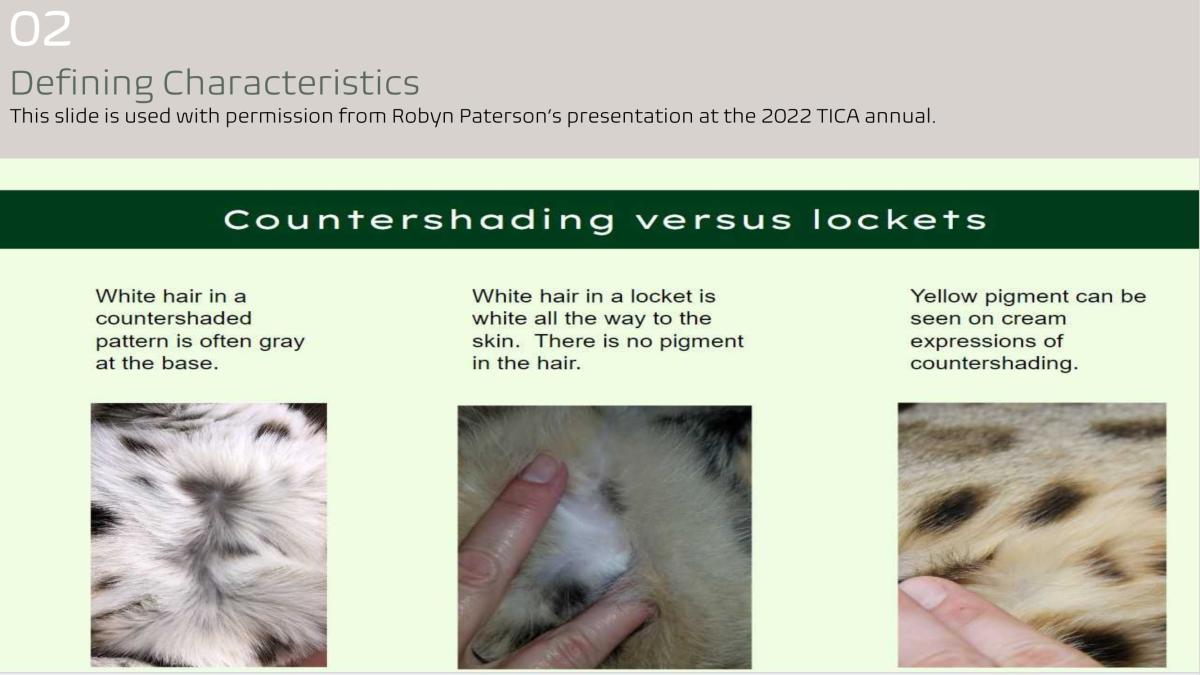
Wild cats (top row) do not have the basic Tabby M on the forehead. While this is not mentioned in the standard, it is something to select for that deserves extra merit as it emulates the wild species. It is achievable in the later generation cats (bottom row).
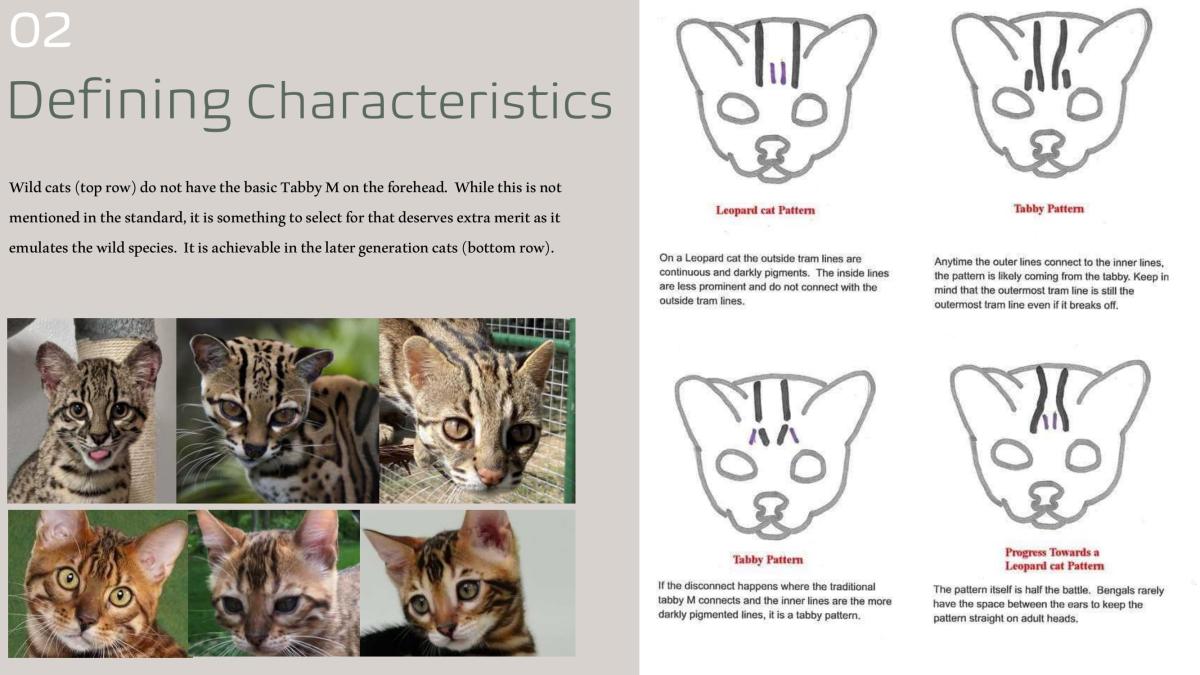
Acknowledgements and Full Credits to: https://cfa-files.s3.us-east-2.amazonaws.com/breed-presentations/Bengal.pdf
